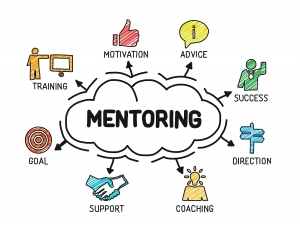Be-a-Mentor Blogging for Business

“To gain business with your blog, you should stop thinking like a salesman and start acting like your reader’s mentor. A salesman wonders how to get his next sale. A mentor cares about his students. He wants to help them get ahead and live a more fulfilled life,” Neil Patel advises.
The first way that blogging gets you customers is it shows you’re open for business, Sarah Carnes writes in HubSpot.com. The second way? It educates your prospects. Take your frequently asked questions (FAQs) and turn them into blog posts. Once a potential customer sees you as a resource, they are much more likely to consider you when they are considering buying the product or service you provide. After researching and building your target audience, you know what they care about most – and what keeps them up at night. Using your content to answer those fears means that you can begin to “own” the conversation.
In the book Good People, author Anthony Tjan names five types of mentors. At Say it For You, we realize that in different blog posts, a business owner or professional practitioner can take on one of these mentoring “roles’:
Master of Craft:
Communicate armed with facts from reliable, trusted sources. As a content writer, link to outside sources to add breadth, depth, and credibility to the ideas you’re expressing and the advice you’re offering.
Champion their cause
Comfort and connect with compassion and encouragement. Soft skills such as relationship-building and interpersonal communication are going to be as important in coming years as technical skills.
Co-pilot
“Collaborate” with readers, showing you understand the obstacles and challenges they face. Encourage them to “vent” by answering the tough questions in your content. But searchers haven’t always formulated their questions, and so what I suggest is that we do that for them.
Anchor
An anchor needn’t work in the mentee’s industry, but is someone who offers insights that readers can use to better cope with issues they are facing.
Reverse mentor
A reverse mentor can be of a younger generation with insights to share that can help older readers make sense of technology or see situations from a different vantage point.
What you can do with the blog is offer different kinds of information in different blog posts, curating content from many different points of view. In blogging for business, be a mentor!





Follow us online!